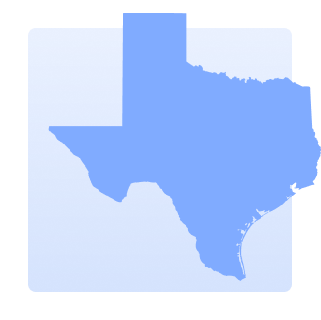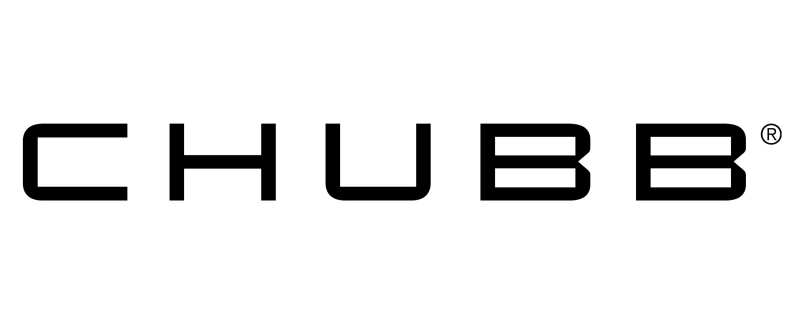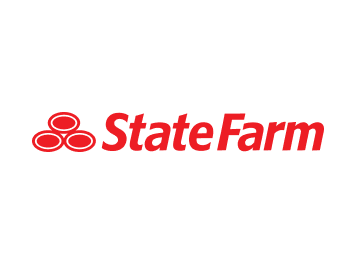Powered by Coverage.com (NPN: 19966249)
Coverage.com, LLC is a licensed insurance producer (NPN: 19966249). Coverage.com services are only available in states where it is licensed. Coverage.com may not offer insurance coverage in all states or scenarios. All insurance products are governed by the terms in the applicable insurance policy, and all related decisions (such as approval for coverage, premiums, commissions and fees) and policy obligations are the sole responsibility of the underwriting insurer. The information on this site does not modify any insurance policy terms in any way.
Best homeowners insurance in Texas for 2026


Powered by Coverage.com (NPN: 19966249)
Coverage.com, LLC is a licensed insurance producer (NPN: 19966249). Coverage.com services are only available in states where it is licensed. Coverage.com may not offer insurance coverage in all states or scenarios. All insurance products are governed by the terms in the applicable insurance policy, and all related decisions (such as approval for coverage, premiums, commissions and fees) and policy obligations are the sole responsibility of the underwriting insurer. The information on this site does not modify any insurance policy terms in any way.
Compare the best homeowners insurance companies in Texas
On average, Texas homeowners pay $3,899 per year for home insurance, based on Bankrate’s analysis of rates from Quadrant Information Services. This is 61 percent more than the national average cost of a home insurance policy, which can make finding affordable coverage in the Lone Star State a challenge.
The top 5 home insurance companies in Texas

Bankrate Score
Avg. annual premium
$300K dwelling coverage
Avg. monthly premium
$300K dwelling coverage
Why USAA made our list: San Antonio-based USAA only sells insurance to active-duty military members, veterans and eligible family members. If you qualify, USAA may be a great option. USAA tied for Best Home Insurance Company Overall in the 2025 Bankrate Awards for its low average rates and highly-rated customer service.
| Bankrate Score | 4.8 |
| J.D. Power | 737/1,000 |
| AM Best Rating | A++ |
USAA standout features
- Replacement cost coverage included
- Fewer customer complaints than average
- Private and government-backed flood coverage

Bankrate Score
Avg. annual premium
$300K dwelling coverage
Avg. monthly premium
$300K dwelling coverage
Why Chubb made our list: Chubb is known for its premium insurance offerings, particularly for homeowners seeking high-value home insurance policies. With a reputation for strong customer service and a wide range of coverage options, Chubb could be a good choice for homeowners looking for a more personalized, robust insurance package.
| Bankrate Score | 4.6 |
| J.D. Power | 677/1,000 |
| AM Best Rating | A++ |
Chubb standout features
- Includes extended replacement cost coverage
- Sells private flood insurance
- Cash settlement option available
Bankrate Score
Avg. annual premium
$300K dwelling coverage
Avg. monthly premium
$300K dwelling coverage
Why Nationwide made our list: Customers who don’t want a one-size-fits-all policy and would prefer to personalize their coverage may prefer Nationwide. For instance, it may be a good choice for people who need to insure additional structures on their property or who have other uncommon coverage needs
| Bankrate Score | 4.2 |
| J.D. Power | 641/1,000 |
| AM Best Rating | A |
Nationwide standout features
- Better Roof Replacement
- Flood policies available
- Local agent offices across the state

Bankrate Score
Avg. annual premium
$300K dwelling coverage
Avg. monthly premium
$300K dwelling coverage
Why State Farm made our list: State Farm is the largest U.S. home insurer based on market share and boasts a statewide network of local captive Texas agents. In addition to homeowners insurance, State Farm also writes a host of other insurance policies like auto, home, boat and life. State Farm could be a good choice for homeowners looking to handle all of their insurance needs with one national company.
| Bankrate Score | 4.1 |
| J.D. Power | 657/1,000 |
| AM Best Rating | A++ |
State Farm standout features
- Largest home insurance company in the country
- Customizable policies
- Extended dwelling coverage included
Bankrate Score
Avg. annual premium
$300K dwelling coverage
Avg. monthly premium
$300K dwelling coverage
Why Farmers made our list: Farmers offers homeowners three different insurance tiers for a smoother shopping experience: Standard, Enchanced and Premier. These pre-packaged policies can help take some of the guesswork out of building your coverage.
| Bankrate Score | 3.6 |
| J.D. Power | 631/1,000 |
| AM Best Rating | A |
Farmers standout features
- Customizable pre-packaged policies
- Claim forgiveness available
- Cosmetic damage coverage available
Compare home insurance rates
Answer a few questions to see personalized rates from top carriers.
Powered by Coverage.com (NPN: 19966249)
Coverage.com, LLC is a licensed insurance producer (NPN: 19966249). Coverage.com services are only available in states where it is licensed. Coverage.com may not offer insurance coverage in all states or scenarios. All insurance products are governed by the terms in the applicable insurance policy, and all related decisions (such as approval for coverage, premiums, commissions and fees) and policy obligations are the sole responsibility of the underwriting insurer. The information on this site does not modify any insurance policy terms in any way.
Common Texas home insurance problems
Acquiring home insurance in Texas isn't always straightforward. Given the state's predisposition to various natural calamities and its vast territorial expanse, insurers may often approach policies with caution. This unique blend of factors can sometimes make it challenging for homeowners to find comprehensive coverage at affordable rates.
Some common issues Texas homeowners might encounter include:
- Higher premiums: Homeowners may see increased rates due to frequent natural disasters like hurricanes, tornadoes and hail storms.
- Flood insurance gaps: Standard policies don't cover flooding, which is common throughout Texas. To be financially protected from flood damage, you’ll need a separate policy.
- Wind coverage: If you live along the Gulf Coast, your home insurance policy may not cover wind damage. In that case, you’ll need to purchase wind insurance separately.
- Limited coverage in certain areas: Insurers might offer limited coverage or charge higher premiums in areas particularly prone to events like wildfires or coastal storms.
- Claim delays: After widespread events, the sheer volume of claims might lead to delays in processing and payouts.
- Policy non-renewals: In high-risk areas, some insurers may decide to nonrenew policies, forcing homeowners to seek coverage elsewhere
Cheapest home insurance companies in Texas
The Lone Star State can pose some challenges for homeowners seeking insurance. However, there are still insurance providers that offer competitive rates without compromising on coverage.
How to get cheap home insurance in Texas
Finding the best home insurance in Texas for your needs at a cheap rate may take extra research. Insurance premiums tend to be higher in areas prone to extreme weather, and Texas is no exception. From ice storms and tornadoes in the north to wildfires and hurricanes in other parts of the state, home insurance coverage needs and prices may vary drastically depending on the risk in your area. Here are some strategies you can use to help you find a lower premium:
- Shop around: Getting quotes from multiple insurance companies can help you find cheap coverage since rates can vary widely by company. Shopping online, working with an insurance broker or local agent or calling around are a few ways to get home insurance quotes.
- Apply discounts: While many carriers offer common discounts, some may be unique to certain companies. When gathering quotes, check out what discounts are available with each company to maximize savings.
- Fortify your home: You may be able to get a cheaper premium if you have a home security system, fire alarms and other safety features installed on your property. These risk-mitigation measures are often rewarded by homeowners insurance companies because they reduce your likelihood of needing to file a serious claim. Even a DIY security system with window alarms and cameras could help you nab savings.
Best home insurance discounts in Texas
Discounts are an easy way to lower your homeowners insurance premium. Below are some common discounts Texas homeowners may qualify for:
- Advanced quote: Existing homeowners who switch companies in advance (before their existing policy expires or renews) may qualify for an advanced quote or early shopper discount with some providers.
- Home security: Homeowners with active and monitored security systems may qualify for extra savings with a home security discount.
- Bundling discount: Bundling discounts can offer significant savings with many insurance companies. Homeowners shopping for cheaper home insurance may want to consider what savings they may earn if they get their auto insurance coverage with the same carrier.
- Claim-free: Homeowners who have not filed a property insurance claim in the past may be eligible for a claim-free discount. Some insurers require you to be claim-free for at least three to five years to qualify.
How to save on home insurance policy renewals in Texas
Year after year, as homeowners confront policy renewals, many wonder how they might obtain better rates or discounts without sacrificing crucial coverage. In Texas, with its unique set of challenges and risks, leveraging certain strategies could result in potential savings on home insurance renewals. Here are some actionable steps you can consider:
- Compare quotes before your policy renews: Don't just auto-renew without taking a moment to consider other potential insurance options. Compare rates from different insurers to ensure you're getting the best deal. Remember, insurance markets evolve and premiums can vary from one provider to another.
- Bundle policies: Many insurers offer discounts if you bundle multiple policies with them, such as auto and home insurance.
- Increase your deductible: Opting for a higher deductible can reduce your premium, but ensure it's an amount you can afford out of pocket in case of a claim.
- Maintain good credit: Insurers often use credit history to help determine premiums. Having a positive credit history might get you a better rate, so taking steps to improve your credit-based insurance score can be worthwhile.
How much is home insurance in Texas?
Texas home insurance tends to be expensive; the average cost of a $300K policy costs 61 percent more than the national average of $2,424 per year. The table below compares average rates from some of Texas’s top home insurance companies for a variety of different dwelling limits.
|
|
|
|
|
|
|---|---|---|---|---|
|
$1,711
|
$2,939
|
$3,318
|
$4,065
|
|
|
$4,373
|
$8,261
|
$9,016
|
$10,229
|
|
|
$2,065
|
$3,454
|
$3,974
|
$4,989
|
|
|
$3,081
|
$4,587
|
$5,007
|
$5,866
|
|
|
$1,419
|
$2,535
|
$2,932
|
$3,698
|
Texas homeowners insurance rates by city
Within Texas, insurance rates can fluctuate from one city to another. Factors like local crime rates, vulnerability to natural disasters and the overall housing market could play a role in these variations. While some cities could have more affordable premiums, others, due to their unique challenges, may see higher rates.
Sorry, we don't have enough data yet on this city yet!
But these other cities in the state may give you some insight.
| City | Avg. annual full coverage premium | Avg. monthly full coverage premium | Avg. savings vs. state average |
|---|---|---|---|
| Detroit | $3,486 | $290 | -11% |
| Henderson | $3,074 | $256 | -24% |
| Mount Enterprise | $3,007 | $251 | -26% |
| Ore City | $3,393 | $283 | -14% |
| Tatum | $3,110 | $259 | -23% |
*Rates are for $300,000 in dwelling coverage.
Frequently asked questions
The Bankrate Promise
Read our full methodologyAt Bankrate, we strive to help you make smarter financial decisions. While we adhere to strict , this post may contain references to products from our partners. Here's an explanation of . Our content is backed by Coverage.com LLC, a licensed entity (NPN: 19966249). For more information, please see our
78
years of industry experience
10
licensed staff
34.5K
ZIP codes examined
120
carriers reviewed
Methodology
Bankrate utilizes Quadrant Information Services to analyze November 2025 rates for all ZIP codes and carriers in all 50 states and Washington, D.C. Quoted rates for our base profile are based on the following characteristics and coverage limits:

Dwelling coverage
$300,000Other structures coverage
$30,000Personal property coverage
$150,000Loss of use coverage
$60,000Liability coverage
$500,000Medical payment coverage
$1,000The homeowners also have a $1,000 deductible, a $500 hail deductible and a 2 percent hurricane deductible (or the next closest deductible amounts that are available) where separate deductibles apply.
These are sample rates and should be used for comparative purposes only. Your quotes will differ.
If otherwise specified, the base profile has been modified with the following homeowner characteristics:
Bankrate Scores
Our 2025 Bankrate Score considers variables our insurance editorial team determined impact policyholders’ experiences with an insurance company. These rating factors include a robust assessment of each company’s cost of coverage, product availability, financial strength ratings, online capabilities and customer and claims support accessibility. We grouped these factors into three essential categories — cost and ratings, coverage and savings, and support — which we then weighted in a tiered approach.
Each category was assigned a metric to determine performance, and the weighted sum adds up to a company’s total Bankrate Score — out of 5 points. Our scoring model provides a comprehensive view, indicating when companies excel across several key areas and highlighting where they fall short.
- Tier 1 (Cost & ratings): To determine how well auto and home insurance companies satisfy these priorities, average quoted premiums from Quadrant Information Services (if available), as well as any of the latest third-party agency ratings from J.D. Power, AM Best, Demotech and the NAIC, were analyzed.
- Tier 2 (Coverage & savings): We assessed companies’ coverage options and availability to help policyholders find a provider that balances cost with coverage. Additionally, we evaluated each company’s discount options listed on its website.
- Tier 3 (Support): To encompass the many ways a home insurance company can support policyholders, we analyzed avenues of customer accessibility along with community support. This analysis incorporated additional financial strength ratings from S&P and Moody’s and factored a company’s corporate sustainability efforts.
Tier scores are unweighted to show the company's true score in each category out of a possible five points.




